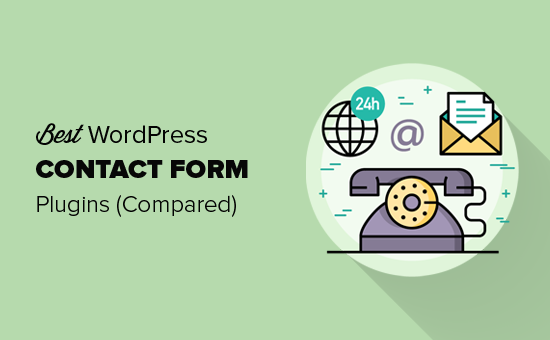
One of the best ways to make an email marketing campaign that is effective for ecommerce is by tailoring your subject lines to your customers' interests. You could personalize your emails to match the interests or purchases of a customer. This will build trust in your brand as well as a deeper connection to your customers. The customer is likely already a fan of the store by making a purchase. In this way, you could reward them by giving them something special when they refer friends or family to your store.
Upselling emails
Upselling emails in email marketing e commerce require persuasive language. People won’t buy an upsell when they know they can get it whenever they like. In order to convince them to buy, you have to convey urgency. Be authentic to your brand by using language that is representative of who you are. Your language should reflect your luxury brand. Make sure your upselling emails match the tone and personality of your brand.
Emails that are upselling can be more effective than other sales methods. They can be used to notify customers about promotions and follow-up with them. Upselling is another powerful email marketing function. It introduces customers to your premium products. This will encourage them to buy more than they usually would. Upselling emails can be used in a customized way that suits your customers' needs.
Cross-selling emails
To make the most of your cross-selling emails, you need to understand how your customers view your products. The way they interact with you will tell you what they consider to be part of one category and which they don't. Dog owners don't often check cat pages, and women rarely buy sneakers. Cross-selling is easy if you take into consideration your customers' browsing history and past purchases.
Segment your customers according to their past purchases, demographics, lengths of customer relationships, etc. Cross-selling is a great strategy to increase revenue and track your sales pipeline. Personalized subject lines are a great way to increase open rates and encourage customers more to buy. Personalization can be demonstrated by using the customer's business name or name in the subject line. This will increase the chance that a customer opens the email, as well as your chances to cross-sell.
Transactional email

You must be familiar with transactional emails in order to make your ecommerce business more visible through email marketing. These emails are essential in the customer relationship, especially if they contain sensitive information. These emails should include the name and address of customers who have made purchases, along with the item purchased. Experian's study shows that including the customer's name as the subject line can increase an email's open rate by 7%. This is because it serves to remind them that they purchased the item. A customer's name should also be included in the body of the email, near the beginning.
An email transaction can be as simple or complex as a confirmation message or a shipping notification. It can be personalised with a logo, or links to the business's website. Because it is triggered by customer activity, the main purpose of transactional emails is their functionality. While transactional emails don't require a lot of attention, they can be used to convey important information to customers and represent a massive marketing opportunity.
Personalized subject lines
Email marketing is only as good as the subject lines you create. Using your subscriber's name in the subject line is one way to stand out from the rest. Personalization is not possible if you don’t have enough information. This can only be done if there is an established opt-in method to collect the email address and name from your subscribers. Incorrect records can lead to your subscribers feeling that you don’t care. Although this is a bad situation, it's also true that the reverse is true.

While keywords play a minor role in email delivery (email subject lines), adding symbols will make ecommerce emails look more attractive. Your email will be more likely to be read, opened, and clicked if the subject line is relevant to the content. Personalization is a key part of email marketing. However, research has shown that 70% of companies fail to personalize emails. Send your ecommerce email at 10 AM and during the day to maximize open rates. The subject line should not be a sales pitch but convey the essence of what your company offers.
FAQ
Where can I find my keywords?
To find standard terms for your products or services, you will need to first consider the kind of products or customers you are offering. Once you have a list of phrases, you can use Google Keyword Planner to find out what phrases people are searching or directly go to search engines such as Bing, Yahoo!, and DuckDuckGo.
How often is SEO needed?
Maintaining your links properly will mean that you won't have to run SEO campaigns or update them often. You could lose business if your links aren't maintained and you rely only on organic traffic.
Generally speaking, monthly SEO updates are recommended for small businesses. For larger companies, quarterly SEO updates may be necessary.
How much does SEO cost?
SEO is a long-term investment so you won't see immediate returns. Remember that search engines rank websites higher if more people find them.
Pricing for each service is affected by many factors including location, price, market size, competition, and keyword competitiveness.
How Often Do I Need to Update My Website?
Updating your site regularly can improve its rankings. However, it's not always necessary. It may not be necessary to regularly update content you have already created.
How long does it take to build up traffic through SEO?
Traffic generation through SEO usually takes 3-4 months. But, this depends on many factors, including:
-
Your site's content quality
-
Backlinks
-
Targeted keywords
-
Competitor rankings etc.
SEMrush offers a free trial for those who are new to SEO. The powerful platform allows you to track all aspects of your SEO campaign including competitor research, backlink profile and top pages. You can also view local listings, organic traffic stats and reports.
Statistics
- And 90%+ of these backlinks cite a specific stat from my post: (backlinko.com)
- A 62.60% organic traffic boost to that page: (backlinko.com)
- Sean isn't alone… Blogger James Pearson recently axed hundreds of blog posts from his site… and his organic traffic increased by 30%: (backlinko.com)
- 93%of online experiences today begin on search engines. (marketinginsidergroup.com)
- 64% of marketers actively create SEO campaigns because they help hit multiple key performance indicators (KPIs), including increasing traffic, helping your site rank for relevant keywords, improving your conversion rate, and much more. (semrush.com)
External Links
How To
How do I know when I'm doing good SEO?
There are many ways you can tell if your SEO efforts are successful.
-
Your bounce rate should be less than 30% - users leave your page without clicking on anything else. If your bounce rate is high, it means that your audience is not trusting your brand and/or isn't interested what you have to offer.
-
People visit multiple pages on your site - this shows that visitors are engaging with your site and finding something useful.
-
Your conversion rate has improved - your customers are more aware of you product or service, and want to buy it.
-
Your average time on site has been increasing. Users spend more time browsing your content.
-
Increased traffic from search engines is a sure sign you're doing excellent SEO.
-
You're getting more shares on social media - this shows that your content is being shared by others and reaching audiences outside your follower base.
-
This is an indication that people are responding positively towards your work by leaving more comments in forums.
-
Increased engagement means more likes and tweets around your site, as well as shares, shares, likes and likes on posts.
-
Your rank is increasing in SERPs, showing that your hard work is paying off.
-
You are getting more leads from your website. This is an indication that people have found you website organically, and are now contacting me.
-
Your sales are growing - this shows that people who came to your website searching for your products and services are buying them.
-
A blog post that gets more views/comments shows that people find it interesting and useful.
-
More subscribers mean more customers to your email list. This shows that people are able to trust you enough to sign up for updates about your company.
-
Sales are rising - this shows that people like you and your products so much that they are willing to pay for them.
-
Your social media followers are higher, which indicates that your fans are more likely to share your content or engage with you.
-
This means that journalists are talking more about your brand online. This increases your brand awareness and improves your reputation.
-
You are being recommended more often, which means that other companies recommend your brand.
-
You will see people returning to your website over and over again. This shows that your customers are happy with the work you do, and they will return for more.
-
Your competitors are losing ground - this shows that they didn't invest as much money in their SEO campaigns as you, making them look bad.
-
Your brand's image changes - this indicates that your brand has gained popularity among a new set of customers.